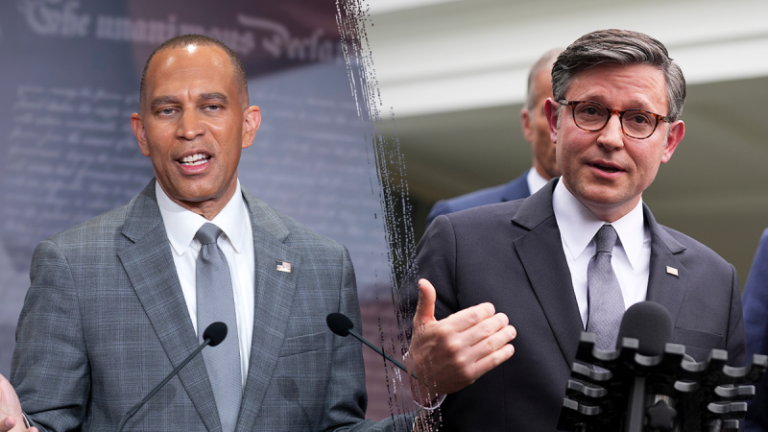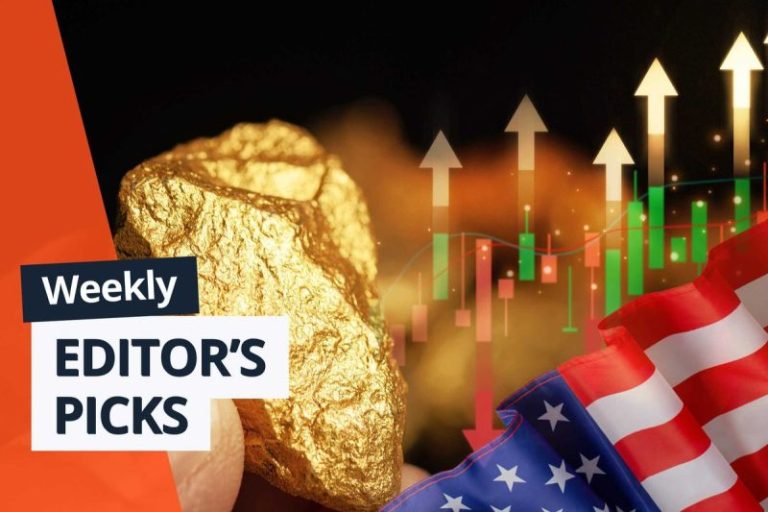The big news impacting markets this week is the shutdown of the US government.
While lawmakers were trying to find a funding solution, Democratic and Republican lawmakers were at loggerheads over maintaining funding for Medicaid programs. It marks the first time in seven years that the government has been shut down — the last time came during negotiations over the disputed US-Mexico border wall in December 2018.
President Donald Trump has resolved to use the closure to push through the firing of thousands of federal government employees and cut funding to projects promised by Democrats.
Additionally, the jobs report, scheduled for release on Friday (October 3), was delayed, causing greater uncertainty for analysts and investors who were trying to gauge the strength of the economy in September.
Despite the lack of official government data, payroll processor ADP reported a loss of 32,000 jobs in September. The decline represents a significant difference from the 45,000 jobs analysts had expected to be added.
Lawmakers aren’t scheduled to return to the negotiating tables until early next week.
For more on what’s moving markets this week, check out our top market news round-up.
Markets and commodities react
Canadian equity markets were in positive territory this week by the end of trading Friday.
The S&P/TSX Composite Index (INDEXTSI:OSPTX) continued its record breaking performance this week, gaining 2.33 percent on the week to close Friday at 30,471.68.
The S&P/TSX Venture Composite Index (INDEXTSI:JX) performed even better, ending the week up 4.38 percent to 964.04. The CSE Composite Index (CSE:CSECOMP) was up 3.3 percent on to close out the week at 180.03.
The gold price continued to climb this week, setting another new record, as it achieved an intraday high of US$3,893.82 per ounce on Thursday (October 2). It was still up 3.63 percent on the week at US$3,884.19 by Friday’s close.
The silver price saw more significant gains, rising 6.31 percent to set a year-to-date high of US$48.30 per ounce during trading on Friday before settling at US$47.95 per ounce by 4:00 p.m. EDT.
The silver price is trading at 14 year highs and has been closing in on records set in April of that year.
Copper had sizable gains this week as the fallout from the closure of Freeport’s Grasberg mine continued to ripple through the market. The copper price was up 7.13 percent this week to US$5.11 per pound.
The S&P Goldman Sachs Commodities Index (INDEXSP:SPGSCI) fell 2.12 percent to end Friday at 546.27.
Top Canadian mining stocks this week
How did mining stocks perform against this backdrop?
Take a look at this week’s five best-performing Canadian mining stocks below.
Stocks data for this article was retrieved at 4:00 p.m. EDT on Friday using TradingView’s stock screener. Only companies trading on the TSX, TSXV and CSE with market caps greater than C$10 million are included. Mineral companies within the non-energy minerals, energy minerals, process industry and producer manufacturing sectors were considered.
1. Prospector Metals (TSXV:PPP)
Weekly gain: 355.56 percent
Market cap: C$128.18 million
Share price: C$1.23
Prospector Metals is a gold explorer working to advance its flagship ML project in the Yukon, Canada.
The 10,869 hectare property, situated near Dawson City, is located within the Tintina Gold Belt, which is home to significant historic mining operations and current exploration and development projects.
Exploration at the site has led to the discovery of more than two dozen high-grade gold surface occurrences, including the Bueno target, which has delivered samples with grades of up to 156 grams per metric ton (g/t).
Shares of Prospector surged following the release of assay results on Wednesday (October 1). In its announcement, the company reported significant near-surface, high-grade assays, with one highlighted sample returning grades of 13.79 g/t gold over 44 meters, and another showing 21.93 g/t gold over 24.65 meters, including 288 g/t gold over 1 meter.
2. Sokoman Minerals (TSXV:SIC)
Weekly gain: 200 percent
Market cap: C$45.92 million
Share price: C$0.165
Sokoman Minerals bills itself as a discovery-oriented company with a portfolio of gold projects and one of the largest land positions in Newfoundland and Labrador, Canada. It also owns a 40 percent stake in the Killick lithium project, a 40/40/20 joint venture with Benton Resources (TSXV:BEX) and Piedmont Lithium (ASX:PLL).
Its primary focus is its flagship Moosehead gold project, located in Central Newfoundland. The project consists of 98 claims covering 2,450 hectares and hosts an orogenic Fosterville-style gold system, according to Sokoman. The company has defined seven zones with high-grade mineralization through over 130,000 meters of drilling.
Sokomon reported on September 12 that it planned to start diamond drilling at the site with a focus on testing the Eastern and Western Trend zones for depth extensions, as well as undiscovered parallel zones. Additionally, the company said on September 2 that it had expanded its land position at the Crippleback Lake gold-copper property to 13,000 hectares and planned to mobilize for induced-polarization surveys, sampling and mapping of the site.
The most recent news from the company came on Monday (September 29), when it announced that Denis Laviolette was appointed to the roles of director, executive chair and CEO. Laviolette joins the company with over two decades of experience in the mining industry, including roles in geology and production, and as an industry analyst.
The company also announced that Timothy Froude will be transitioning to the role of company president, having previously held both the president and CEO roles. Additionally, Gary Nassif, former senior vice president of Lode Gold Resources (TSXV:LOD,OTCQB:LODFF), was appointed as a director, and Greg Matheson, former COO of New Found Gold (TSXV:NFG,NYSEAMERICAN:NFGC), was named vice president of exploration.
3. Kesselrun Resources (TSXV:KES)
Weekly gain: 118.18 percent
Market cap: C$10.82 million
Share price: C$0.12
Kesselrun Resources is an explorer working to advance the Huronian gold project in Ontario, Canada.
The project is located in a region with significant exploration and mining assets, including Agnico Eagle Mines’ (TSX:AEM,NYSE:AEM) Hammond Reef project and New Gold’s (NYSE:NGD,TSX:NGD) Rainy River mine. Historic indicated resources at Huronian are 45,000 ounces of gold, with inferred quantities of 501,000 ounces or gold.
Shares of Kesselrun surged this week after Gold X2 Mining (TSXV:AUXX,OTCQB:GSHRF) announced on Wednesday that it had signed a definitive agreement to acquire Kesselrun. Gold X2 said the transaction will give it a 100 percent interest in the Huronian project, which is located adjacent to its own Moss gold project.
4. Royal Road Minerals (TSXV:RYR)
Weekly gain: 104.35 percent
Market cap: C$55.80 million
Share price: C$0.235
Royal Road is an exploration company working to advance its Güintar and Margaritas projects and the El Aleman mining concession in Colombia. The company acquired the adjacent Güintar and Margaritas properties, located near Medellin, from major miner AngloGold Ashanti (NYSE:AU,JSE:ANG) in 2019. Since that time, Royal Road has drilled a total of 13,700 meters across 45 drill holes at Güintar, while Margaritas remains untested.
Assays have produced a highlighted intersection of 1 g/t gold equivalent over 303.7 meters, which includes 2.1 g/t gold, 12.4 parts per million silver and 0.6 percent copper over 62 meters.
Shares of Royal Road gained this week alongside a pair of news releases. On Monday, the company announced that Rio2 (TSXV:RIO,OTCQX:RIOFF) has acquired approximately 15 percent of Royal Road’s issued and outstanding shares as part of a block trade; they were previously held by a single investor.
The other release came on Tuesday (September 30), when Royal Road reported that it has engaged with state and local authorities, as well as the local community, to restart work at Güintar and Margaritas.
5. StrikePoint Gold (TSXV:SKP)
Weekly gain: 103.85 percent
Market cap: C$12.06 million
Share price: C$0.265
StrikePoint Gold is an explorer with a focus on its Hercules gold project in Nevada, US.
The 100 square kilometer site, located within the Walker Lane Trend, hosts five drill-tested targets, with over 300 holes. The company acquired the property in August 2024 from Elevation Gold Mining for a total consideration of C$250,000, along with a 3 percent royalty on certain claims. On April 28, the company released results from its spring drilling program, with one highlighted assay returning values of 0.54 g/t gold and 4.62 g/t silver from 32.04 meters below surface; that includes an interval of 1.14 g/t gold and 10.53 g/t silver over 4.57 meters.
The most recent news from the project was announced on September 23, when StrikePoint said it had received drill permits for the Pony Meadows target. The company noted that it is permitted to mobilize up to three rigs, and will focus on a 2.6 kilometer structure that was revealed during surface exploration.
StrikePoint said it has two additional permits for the Sirens and Como Comet targets.
FAQs for Canadian mining stocks
What is the difference between the TSX and TSXV?
The TSX, or Toronto Stock Exchange, is used by senior companies with larger market caps, and the TSXV, or TSX Venture Exchange, is used by smaller-cap companies. Companies listed on the TSXV can graduate to the senior exchange.
How many mining companies are listed on the TSX and TSXV?
As of May 2025, there were 1,565 companies listed on the TSXV, 910 of which were mining companies. Comparatively, the TSX was home to 1,899 companies, with 181 of those being mining companies.
Together, the TSX and TSXV host around 40 percent of the world’s public mining companies.
How much does it cost to list on the TSXV?
There are a variety of different fees that companies must pay to list on the TSXV, and according to the exchange, they can vary based on the transaction’s nature and complexity. The listing fee alone will most likely cost between C$10,000 to C$70,000. Accounting and auditing fees could rack up between C$25,000 and C$100,000, while legal fees are expected to be over C$75,000 and an underwriters’ commission may hit up to 12 percent.
The exchange lists a handful of other fees and expenses companies can expect, including but not limited to security commission and transfer agency fees, investor relations costs and director and officer liability insurance.
These are all just for the initial listing, of course. There are ongoing expenses once companies are trading, such as sustaining fees and additional listing fees, plus the costs associated with filing regular reports.
How do you trade on the TSXV?
Investors can trade on the TSXV the way they would trade stocks on any exchange. This means they can use a stock broker or an individual investment account to buy and sell shares of TSXV-listed companies during the exchange’s trading hours.
Article by Dean Belder; FAQs by Lauren Kelly.
Securities Disclosure: I, Dean Belder, hold no direct investment interest in any company mentioned in this article.
Securities Disclosure: I, Lauren Kelly, hold no direct investment interest in any company mentioned in this article.
This post appeared first on investingnews.com










